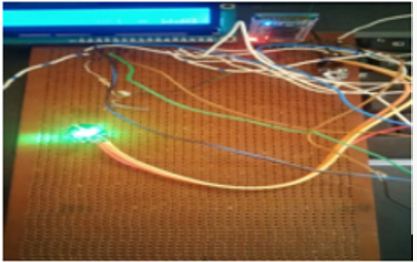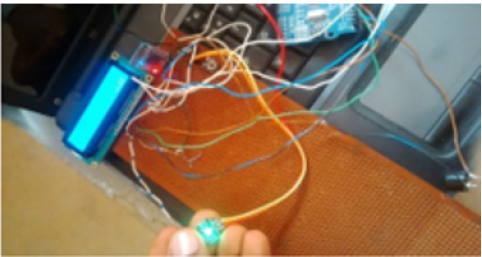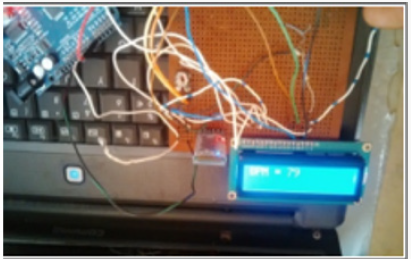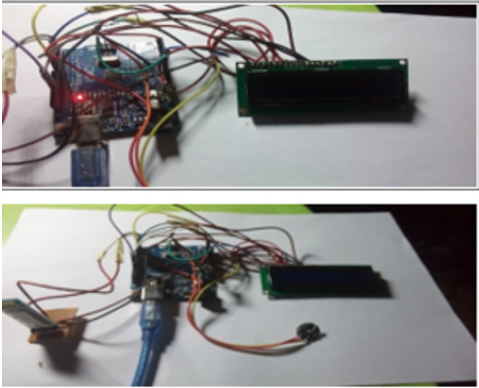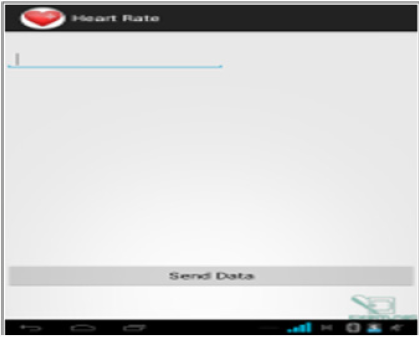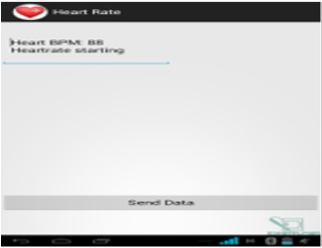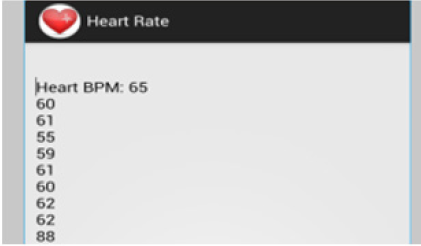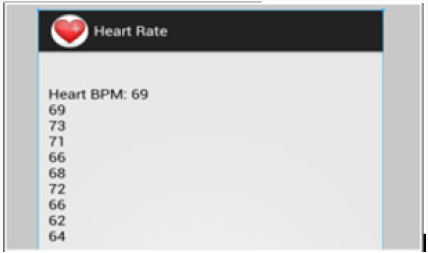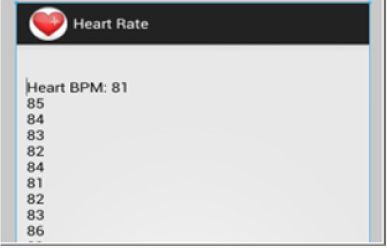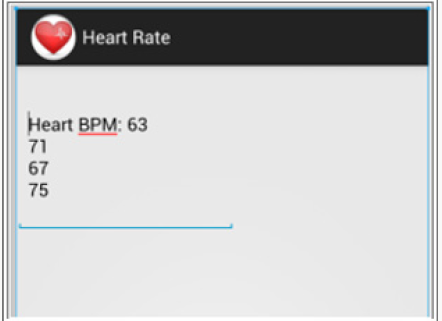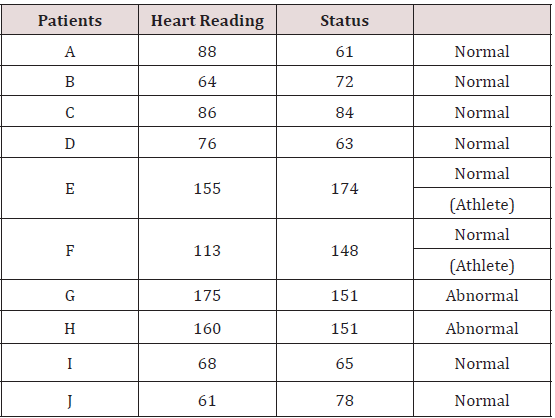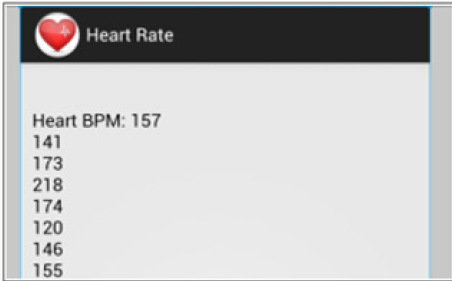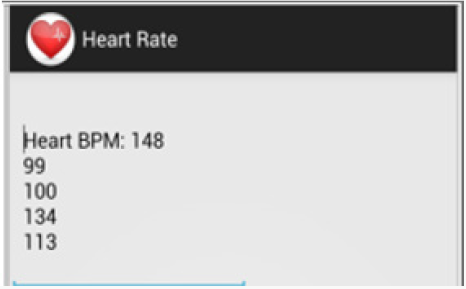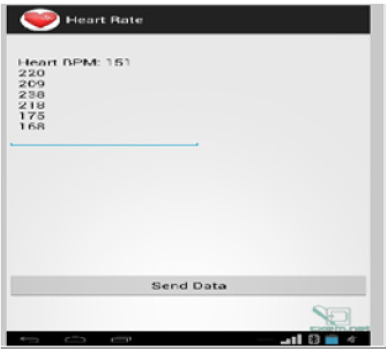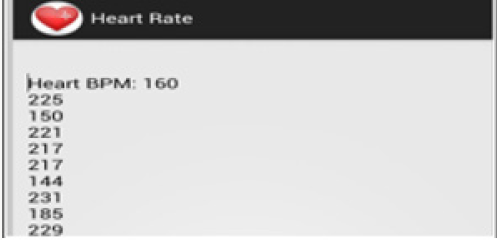
Lupine Publishers Group
Lupine Publishers
Menu
ISSN: 2637-6679
Review Article(ISSN: 2637-6679) 
Development of a Pulse Measuring System for Healthcare Volume 2 - Issue 3
Fasidi FO1 and Adebayo OT2*
- 1 Department of Computer Science, Federal University of Technology, Nigeria
- 2Department of Information Technology, Federal University of Technology, Nigeria
Received: July 09, 2018; Published: July 18, 2018
Corresponding author: Adebayo OT, Department of Information Technology, Federal University of Technology, Akure, Nigeria
DOI: 10.32474/RRHOAJ.2018.02.000138
Abstract
Mobile health care monitoring provides easy assessment of patient’s health status by looking at the changes in vital sign. The health care giver can have access to this data. In this work, a mobile heart rate monitoring system is implemented. In order to detect the heartbeat/pulse. The device works with an android application which receives the data and sends the gotten data to the health care giver. The system makes use of arduino board which functions as a microprocessor. The pulse sensor takes in the pulse readings and the arduino uno micropocesssor converts it to heartbeat via series of programmed instructions on the microprocessor.
Keywords: Mobile; Heart rate; Vital signs; Arduino
Introduction
Mobile system brings patient closer to the doctor therefore bringing about a better awareness between the patient and doctor and equally reducing the stress and long manual way of patient having to visit the doctor often. It equally brings about efficiency in health care Andreas et al. [1].
Vital Signs
Vital signs are indicators of patient’s health status. Some of them includes: temperature, pulse, respiration and blood pressure (BP)and pulse oximetry. They are useful in detecting or monitoring medical problems. Vital signs and other physiological measurements can be the bases for problem [2]. The normal ranges of the vital signs are finely adjusted, and any deviation from normal may indicate disease. During the course of an illness, variations in the vital signs may occur and this may indicate changes in the patient’s condition.
Pulse Rate
The pulse rate is a measurement of the heart rate, or the number of times the heart beats per minute. As the heart pushes blood through the arteries, the arteries expand and contract with the flow of the blood. Taking a pulse not only measures the heart rate, but also can indicate the following: Heart rhythm Strength of the pulse [3,4]. The normal pulse for a healthy adult ranges from 60 to 100 beats per minute. The pulse rate may fluctuate and increase with exercise, illness, injury, and emotions. Females ages 12 and older, in general, tend to have faster heart rates than do males. Athletes, such as runners, who do a lot of cardiovascular conditioning, may have heart rates near 40 beats per minute and experience no problems.
There is a need for a heartbeat monitoring due to the fact that the heart happens to be one of the most vital organ in the human body hence it functionality is of vital importance to anyone [4,5].
Design of the Proposed System
The proposed mobile health pulse monitoring system is meant to help in the effective monitoring of heart beats changes in the human body of a patient (as this is crucial to the health state of the patient) , hence keeping the patient updated about their heart health and making the health care giver aware of the functional state of the patient which in turn gives the doctor an updated information about a patient and the progress in their health [6,7]. The systems which consist of a heart beat measuring device (built with an arduino board) with an android application serves as an interface of communication between the patient and the health care giver hence sending the data in form of a Short Message Service (SMS) to the doctor [8,9]. The system hardware part is built with an arduino board which serves as the microprocessor, this processor has other hardware components which are connected to the board and all these are equally attached to the Vero board. These attached devices are programmed to be controlled by the microprocessor (Arduino).
Pulse Calculation
There are various means which pulse beat per minute of an individual could be gotten different method could be used all depending on the calculation method one choses to adopt.
In this method we have to read only five pulses. Then we calculate the total heart rate in minute by applying the model below
Five_pulse_time =time2 – time1;
Single_pulse_time = Five_pulse_time / 5;
Rate = 60/ Five_pulse_time;
Where time1 is the first pulse counter value and time 2 is the last counter value. Rate is the final heart rate.
When the first pulse comes the counter is started, by using timer counter function in arduino that is millis ( ); and take first pulse counter value form millis( ); Then wait for five pulses. After getting five pulses, again take the counter value in time2 and then subtract time1 from time2 to take original time taken by the five pulses. And then divide this by 5 times for getting single pulse time. Now that we have time for single pulse and we can easily find the pulse in one minute, dividing 60second by single pulse time [10,11].
Rate = 60000ms / single pulse time (Figure 1).
Implementation
Hardware Mobile Device Implementation
Figure 2 above shows the step taken to using the system, which involves placing the fore finger on the pulse sensor. However, one needs to use a support aid as we make contact with the system, which is meant to help maintain fixed contact with the finger so as to ensure accurate pulse readings. Display of a value of pulse reading from my device. Hence this hardware device measures the pulse rate per minute and displays the value on a screen which makes it accessible by the user (Figure 3). This device has a bluetooth module which makes it easy for the device to connect with the patient android device hence transferring the readings to the phone applications [12,13]. This data is the transfer to the health care giver mobile number in form of a message which contains the beat per minute and location.
The Software Platform
The software application this data helps in the transfer of data gotten from the monitoring device this helps to transmit the data from the application to the doctor’s phone in form of a message at the click of the send data on the application by the patient (Figure 4). From the result gotten of test carried out on different people, it can be seen that the result varies, which shows the varying heart beats of different people and how it changes from person to persons (Figures 5 & 6). We got a value between ranges of heart beat from 60bpm to 100bpm for normal healthy persons, but for an athlete due to often exercise and training it is between the values of 155 bpm to 174 bpm. The ABNORMAL value gotten is from a person who was sick giving us a value between 175bpm to 151 and 160 bpm to 151 bpm [14] (Figures 7 & 8). The test was conducted on different healthy people and on an athlete and two sick people. From the result it can be concluded that the normal people have different heart beat readings which could be affected by their health states. The result has helped us to conclude and know the different readings and changes in the human heart beat. Hence providing us with accurate knowledge and values as shown in the (Table 1) and (Figures 9 & 10).
Conclusion
This work has been able to help in the development of a mobile pulse monitoring system, which is for the purpose of determining the heartbeat (Figures 11 & 12), it helps to monitor effectively the different changes in the heart beat of a user and it notifies the medical agent about the gotten data, hence keeping the medical agent updated about the internal changes or health status of the patients. The project was executed with the use of a microprocessor (arduino uno) and other hardware components like the sensors, Bluetooth module (Figures 13 & 14).
References
- Andreas L, Reinhard I (2008) Mobile health monitoring for the elderly. Pervasive and Mobile 478-495.
- Azam A, shadi T (2013) Mobile health service for patient with chronice disease.
- (2015) International journal of Ad hoc, sensor & ubiquitous computing (IJASUC) 3(3).
- Garth V, Tirthankar G, Renita M, Craig C (2012) wireless body area networks for healthcare.
- Hongqiang L, Haijiang Y (2012) An Introduction to Wearable sensors in intelligent clothing for measuring human body temperature based on optical fiber bragg grating 20(11): 11740-11752.
- Jun T, Hsu M, Chun-Chi Lo, Chi-Hang Hsu, Po-Hsun Cheng, et al. (2011) Ubiquitous Mobile Personal Health System Based on Cloud Computing. IEEE.
- Heger D (2010) Mobile Devices An Introduction to the Android Operating Environment.
- Katsarakis M (2012) An Introduction to Android.
- Mayank K (2013) Microcontroller Based Heart Beat Monitoring and Alerting System 9(1): 30-32.
- Michael F, Oliver R (2010) Ubiquitous computing: an overview of technology impacts. Telematics and Informatics 28(2): 55-65.
- Mohammd V, Khan T (2009) A Low Cost Optcal Sensor Based Heart Rate Monitorin System.
- Rifat K, Faizul A (2009) Low Cost Optcal Sensor Based Heart Rate Monitorin System B Intelligent Mobile Health Monitoring System.
- Switkin D (2012) Android Application Development. Google Inc, USA.
- Yu Jin H (2009) Mobile health monitoring system based on activity recognition using accelerometer.

Top Editors
-

Mark E Smith
Bio chemistry
University of Texas Medical Branch, USA -

Lawrence A Presley
Department of Criminal Justice
Liberty University, USA -

Thomas W Miller
Department of Psychiatry
University of Kentucky, USA -

Gjumrakch Aliev
Department of Medicine
Gally International Biomedical Research & Consulting LLC, USA -

Christopher Bryant
Department of Urbanisation and Agricultural
Montreal university, USA -

Robert William Frare
Oral & Maxillofacial Pathology
New York University, USA -

Rudolph Modesto Navari
Gastroenterology and Hepatology
University of Alabama, UK -

Andrew Hague
Department of Medicine
Universities of Bradford, UK -

George Gregory Buttigieg
Maltese College of Obstetrics and Gynaecology, Europe -

Chen-Hsiung Yeh
Oncology
Circulogene Theranostics, England -
.png)
Emilio Bucio-Carrillo
Radiation Chemistry
National University of Mexico, USA -
.jpg)
Casey J Grenier
Analytical Chemistry
Wentworth Institute of Technology, USA -
Hany Atalah
Minimally Invasive Surgery
Mercer University school of Medicine, USA -

Abu-Hussein Muhamad
Pediatric Dentistry
University of Athens , Greece

The annual scholar awards from Lupine Publishers honor a selected number Read More...

.png)








